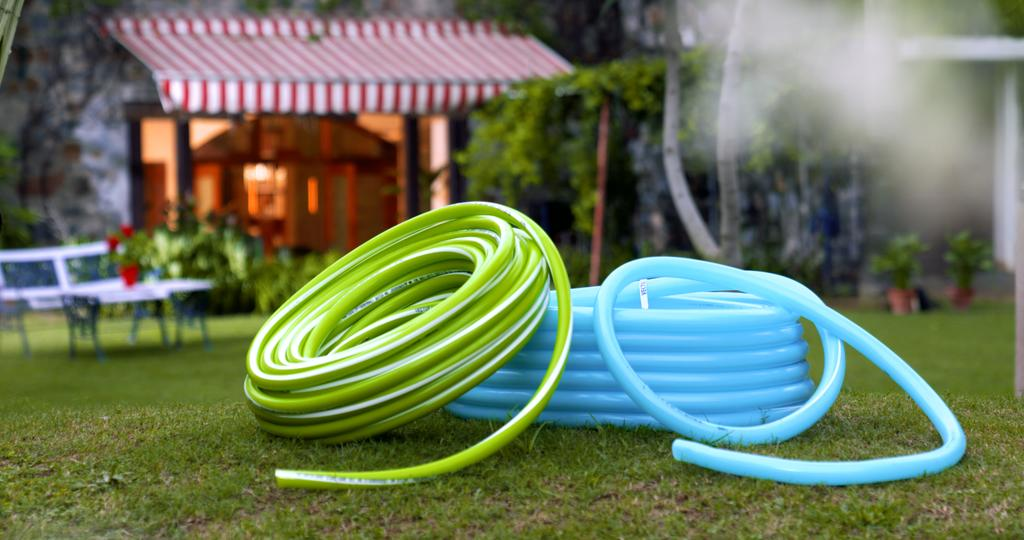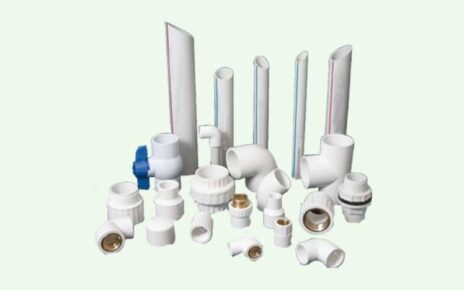Maintaining a lush and vibrant garden requires more than just a green thumb; it demands the right tools and equipment. Among the essential tools for any gardener, garden hose pipes play a pivotal role in ensuring efficient and convenient watering. Whether you’re tending to a small backyard garden or a sprawling landscape, selecting the appropriate garden hose pipe is a decision that directly impacts the health and vitality of your plants. In this article, we will explore the factors to consider when choosing garden hose pipes, with a focus on the benefits of PVC pipes, to simplify your watering routine.
Material Matters: The Advantages of PVC Garden Hose Pipes
When it comes to garden hose pipes, the choice of material is a crucial consideration. PVC (polyvinyl chloride) is a popular and versatile material that offers numerous advantages for garden hose pipes. PVC garden hose pipes are known for their durability, flexibility, and resistance to weathering. These pipes can withstand varying temperatures and exposure to sunlight without degrading, ensuring a longer lifespan compared to other materials.
One of the notable benefits of PVC garden hose pipes is their lightweight nature. Maneuvering and carrying a lightweight hose pipe can significantly ease the watering process, especially for those with larger gardens. Additionally, PVC pipes are less prone to kinking, which often occurs with heavier hoses, ensuring a continuous and uninterrupted water flow.
Consider Length and Diameter
The length and diameter of the garden hose pipe are two critical factors that directly affect water pressure and coverage. Longer hoses provide more reach, allowing you to water plants in distant corners of your garden without needing to constantly relocate the water source. However, it’s essential to strike a balance between length and water pressure. Longer hoses can result in reduced water pressure at the end, impacting the efficiency of watering.
Diameter also plays a significant role in water pressure. Garden hose pipes typically come in diameters of ½ inch, 5/8 inch, and ¾ inch. A larger diameter allows for higher water flow, which is particularly beneficial when watering larger areas. However, keep in mind that a larger diameter hose can be heavier and more challenging to handle, especially when filled with water.
Fittings and Connectors: The Importance of Compatibility
A garden hose pipe is only as effective as its fittings and connectors. These components ensure a secure and leak-free connection between the hose and the water source, as well as any attachments such as sprinklers or nozzles. When choosing a garden hose pipe, pay close attention to the type of fittings it comes with and their compatibility with your existing watering tools.
PVC garden hose pipes often come with durable and corrosion-resistant fittings, ensuring a reliable connection over time. Look for hoses with standardized fittings, such as the commonly used GHT (garden hose thread) connection, to ensure that you can easily attach and detach various watering accessories.
Additional Features for Convenience
In the realm of garden hose pipes, convenience-enhancing features can make a significant difference in your watering experience. Some hoses come with specialized coatings that make them resistant to tangling and kinking. Others feature reinforced layers for added durability and burst resistance, particularly important in regions with fluctuating temperatures.
Consider hoses with adjustable nozzles or sprayers that allow you to control the water flow pattern and intensity. This feature is invaluable for customizing your watering routine to cater to different plant types and watering needs. Moreover, hoses with built-in anti-microbial technology help prevent the growth of mold and mildew, ensuring a cleaner and safer watering process.
Maintenance and Storage
Proper maintenance and storage are essential to prolong the lifespan of your garden hose pipe. After each use, make sure to drain excess water from the hose to prevent freezing during colder months. Store the hose in a cool and dry location, away from direct sunlight, to prevent UV damage and deterioration.
Regularly inspect the hose for any signs of wear, such as cracks, leaks, or weak spots. Promptly address any issues to prevent further damage and maintain optimal water flow. By practicing good maintenance habits, you can ensure that your garden hose pipe remains in excellent condition for years to come.
Conclusion
In the realm of gardening, the right tools can transform mundane tasks into enjoyable and efficient activities. Selecting the right garden hose pipe is a prime example of how a thoughtful choice can simplify your watering routine and contribute to the health and beauty of your plants. PVC garden hose pipes offer a range of benefits, from durability and flexibility to lightweight handling and resistance to kinking.
When choosing a garden hose pipe, consider factors such as material, length, diameter, fittings, and additional features. By investing in a high-quality hose pipe and practicing proper maintenance, you can ensure a seamless and hassle-free watering experience, allowing you to focus on what truly matters – nurturing your garden and watching it flourish.




